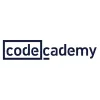Take a look inside 11 images
Codecademy
Pros: A completely intuitive interface, a wide variety of courses, and instant feedback within the lessons.
Cons: Pro accounts are required for more than just a basic level of instruction.
Bottom Line: For both introductory and higher skill levels, it teaches the breadth and depth of skills for programming careers.
Teachers can use Codecademy with any students who are interested in learning more about computer science, coding, application development, data science, or related topics, whether for in-class lessons, personal interest, or career exploration. It will be most useful for advanced students; lessons are appropriate for students with basic computer knowledge and strong reading skills. In the classroom, students can work alone or, when they've completed a track, collaborate to solve complex problems and build more sophisticated applications. The projects are a perfect simulation of a computer engineer's working environment. Overall, Codecademy is a fabulous introduction to a fast-growing career path as well as to skills that students can use to build websites and applications.
It's easy for both teachers and students to jump right into Codecademy. There's nothing to install, with the entire lesson right there in the interface. Start by exploring what Codecademy has to offer, and then introduce your students to what they can learn on the site, along with what they can do with what they learn. Then have students choose a topic to explore. If your school's budget allows, the Pro subscription provides for deeper learning in career and skill paths, rather than just a surface introduction; there's a 7-day free trial for Pro. And if you use Clever, you can get free Pro memberships for high school classes.
Codecademy is a one-stop shop for learning computer science, coding, web development, and other skills that can help students further their education or work toward employment goals. There are both free and paid (Pro) options, with the free option allowing students access to basic lessons in HTML/CSS, Python 2, JavaScript, Java, C#, R, PHP, SQL, C++, Ruby, and more, covering computer science, data science, application development, web development, machine learning, etc. The free interactive lessons within these courses are sufficient for students to figure out if they want to pursue a topic further, or if a particular language or course will help them achieve their goals. But the free options don't allow for much in-depth learning or real-world practice.
When you begin, you can either explore or complete a short quiz to get course recommendations. Within each lesson, the left side of the screen includes reading and instructions, the middle of the screen is the coding workspace, and the right side of the screen has the output. Students implement the lessons, run the programs, and see instant results and feedback. There are plenty of hints along the way if needed, and incorrect attempts are gently corrected. The interface also includes an optional focus timer.
Those with a Pro subscription have access to substantially more material, including the projects, quizzes, and other features for the free courses, as well as member-exclusive courses, extra practice, real-world projects, and access to the Pro-specific member community where students can collaborate and share resources with other users. Also available to Pro users are road maps designed for career and skill paths, making it easy for students to reach their specific goals. The user dashboard displays lessons worked on that day, courses in progress, and recommended projects and quizzes (for Pro users).
The self-paced design makes Codecademy a perfect extension of classroom activities for students ready for more. The overall design makes it easy to use, and the lessons expertly demonstrate the tools and provide immediate feedback as students experiment. The lessons have the trifecta of perfectly paced instruction, live feedback as students execute commands, and tips for taking things further.
Even with a free account, Codecademy has students writing and editing real code right from the beginning. The well-designed interface is simple to navigate and information is well organized, making it easy even for intimidated students to jump right in. There's no learning curve for the lessons; it's all self-contained. Simply read the instructions on the left, implement them in the middle, click Run, and see the output on the right. The instructions are broken down step by step, and students can't move on until they've successfully implemented an instruction and the next step automatically unlocks. There are plenty of helpful hints along the way, and incorrect implementations are automatically given additional help. Students can also play around in the workspace section, clicking Run whenever they want to try out something new.
For those who want to dig deeper without a Pro account, or for those who just need a bit of help, the regular forums provide a fair amount of expertise, and there are also some FAQs and some informational articles. It's not only a great resource for computer science courses, but also for students who want to explore programming as a possible career and apply their new skills to real-world projects, which adds another creative layer to learning.




















